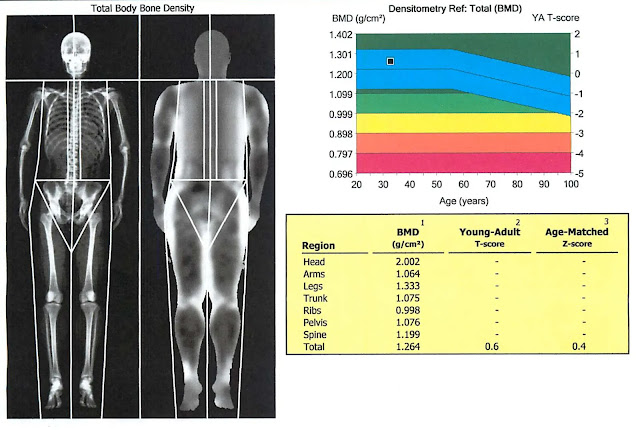Osteopenia and Osteoporosis
Osteopenia is a common condition that affects around 34 million Americans. Osteopenia is a loss of bone mineral density that causes the bones to become weak. Although it isn't as severe as osteoporosis it is something to be concerned about.
Generally, you will see osteopenia in people older than 50, those with poor nutrition, as well as women after menopause.
Bones are made of living tissue that are constantly breaking down and rebuilding, after the age of 35 we begin to break down bone more than rebuild it. Bone density decreases throughout life even in a healthy person by less than 1 percent a year. This becomes an issue when the bone loss happens more rapidly which leads to osteopenia.
Below is a list of things that can lead to
Osteopenia:
Hyperthyroidism
Medications such as prednisone, some cancer treatments, high blood pressure and seizures
Hormonal changes during menopause
Poor nutrition, not enough calcium or vitamin D
Gastrointestinal system surgery that can affect the body’s ability to absorb needed nutrients and minerals
Smoking, drinking too much caffeine and alcohol, not exercising
Symptoms of Osteopenia:
Osteopenia usually doesn’t have any signs or symptoms until it has progressed into osteoporosis. Although its rare those with osteopenia may experience bone pain or weakness.
Bone density loss is determined by a DEXA scan, short for dual-energy X-ray absorptiometry. It’s a quick and painless imaging test that uses X-rays to determine the health of your bones. The DEXA scan uses a score called a T-score:
+1 to -1 indicates normal bone density
-1 to - 2.5 indicates osteopenia
-2.5 or lower means osteoporosis
While there is no cure for osteopenia there are things one can do to prevent it from turning into osteoporosis. Below is a list of strategies to improve bone health and prevent worsening so you can avoid osteoporosis.
Calcium treatment
Exercise, weight training, resistance training, squats, over head presses, exercises that load your hips and spine, posture exercises
Healthy diet, eating allot of greens, spinach, dried beans, broccoli, wild freshwater salmon, dairy products such as cheese, milk and yogurt.
Fish oil and flax seed oil
Supplements for vitamin D and sun exposure
Living with Osteopenia
Every two to three years take a bone density test to monitor bone health. Lifestyle changes can prevent osteopenia from developing into osteoporosis.
Avoid high impact exercises, twisting exercises, flexion, excessive bending, any type of exercise with a high risk of falling
Home should be well lit to prevent falls
Remove any tripping hazards such as area rugs, cords, small furniture, items that are out of place.
Nonskid rugs on floors
Take care of slippery surfaces immediately such as spills, ice and snow
Osteoporosis
Osteoporosis is the progression of osteopenia, the bones become so weak that a cough or even bending over can cause a fracture. Common fracture sites are hip, wrist or spine. Osteoporosis can cause back pain due to a fractured or collapsed vertebra, loss of hearing over time, stooped posture, bones that break easily, loss of height, and shortness of breath. Osteoporosis is diagnosed by taking a DEXA scan to determine bone density.
Treatment options are vitamin and mineral supplements, several classes of medications such as hormone and hormone related therapy, bisphosphonates, biologics, anabolic agents, exercise and diet.
People who are at risk for osteoporosis are as
follows:
Poor diet
Bone structure and body weight- petite and thin
people are at greater risk due to less bone to lose
Family history
Some medical conditions and medications such as overactive thyroid, parathyroid or adrenal glands, bariatric surgery or organ transplant, hormone treatment for breast or prostate cancer, history of missed periods, celiac disease, inflammatory bowel disease, blood diseases such as multiple myeloma
Inactive lifestyle
Smoking
Excessive alcohol use
Ethnicity- Caucasian and Asian people have a higher risk
Living with Osteoporosis
If you have osteoporosis you would want to take the same precautions that are mentioned for osteopenia.
How Pilates Helps
Pilates focuses on core muscles which are the abdominals, back and pelvis. Strengthening these muscles improves balance, a strong core and good balance reduces the risk of falls. Pilates also incorporates strength and resistance training; this is important to strengthen the bones.
Resources
scoliosisptjax.com
mayoclinic.org
clevelandclinic.org




Comments
Post a Comment